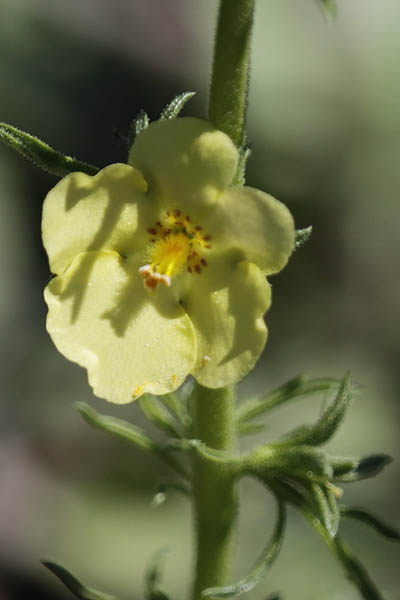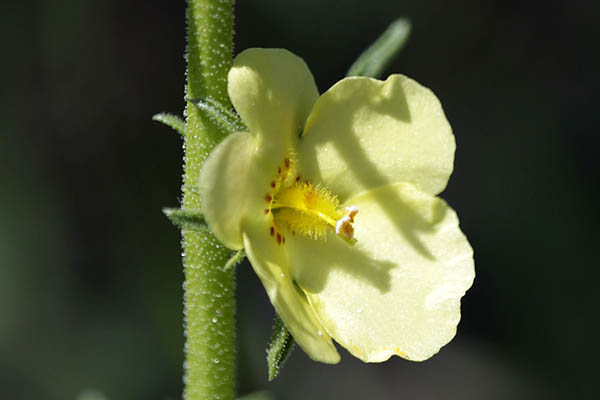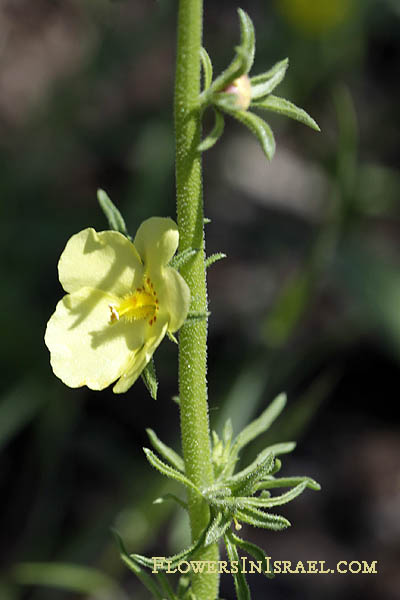Hebrew: בוצין מזרחי, Arabic: البوصير المشرقي
| Scientific name: | Verbascum orientale (L.) All. | |
| Synonym name: | Celsia orientalis L. | |
| Common name: | Oriental celsia | |
| Hebrew name: | בוצין מזרחי | |
| Arabic name: | البوصير المشرقي | |
| Family: | Scrophulariaceae, לועניתיים |

Location: Givat-Hamoreh, Little Hermon - Nebi Dahi, גבעת המורה ,נבי דחי |
| Life form: | Annual | |
| Stems: | Puberulent to glabrescent below, glandular-puberulent above; stem 15-70cm | |
| Leaves: | Alternate, rosette, entire, dentate or serrate | |
| Inflorescence: | lax, simple | |
| Flowers: | Hermaphrodite, Yellow | |
| Fruits / pods: | Capsule, 4-7mm, ellipsoid | |
| Flowering Period: | March, April | |
| Habitat: | Batha, Phrygana | |
| Distribution: | Mediterranean Woodlands and Shrublands, Semi-steppe shrublands, Deserts and extreme deserts, Montane vegetation of Mt. Hermon | |
| Chorotype: | Mediterranean | |
| Summer shedding: | Ephemeral |

Location: Givat-Hamoreh, Little Hermon - Nebi Dahi, גבעת המורה ,נבי דחי Derivation of the botanical name: Verbascum, mullein; corrupted form of barbascum, from the Latin barba (a beard), in allusion to the shaggy foliage; the ancient Latin name for this plant. orientale, "eastern, oriental"; of the East. The Hebrew name: בוצין, busin, Aramaic בוצינא, būṣīnā, a wick, a lamp, because of the shape of the flower. Celsia, named for Olof Celsius (the elder) (1670 – 1756), a Swedish botanist, philologist and clergyman. He was a professor at Uppsala University, Sweden.

Location: Givat-Hamoreh, Little Hermon - Nebi Dahi, גבעת המורה ,נבי דחי |